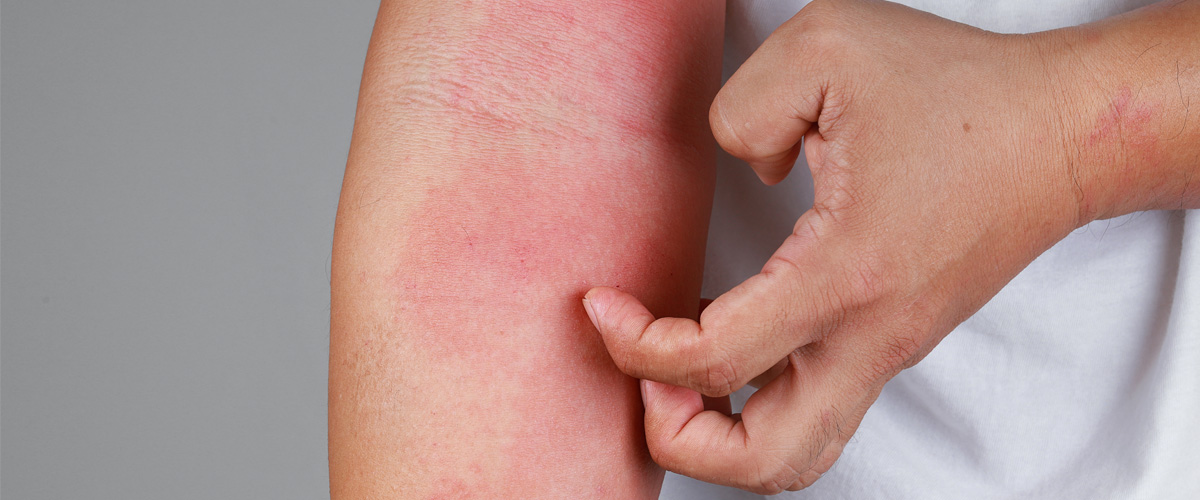The skin barrier
It’s clear that most people with eczema experience pain such as stinging as a result of their condition8, while up to 80% also describe themselves as having sensitive skin9. By comparison, the worldwide prevalence of sensitive skin in the general population is around 40%9. Research indicates that, at least to some degree, this increased pain and sensitivity is caused by a weakened skin barrier10. People with eczema were found to be more sensitive to electrical stimulation of sensory nerves compared to people with normal skin. However, when people with normal skin had their skin barrier damaged, either through tape-stripping to remove the outer skin layers, or by removing skin lipids with solvents, they too experienced increased sensitivity10. In the real world, a damaged skin barrier can mean irritants or allergens are more easily able to penetrate the skin and trigger an immune response, resulting in itch, inflammation and potentially pain.
Nerve fibre density
People with eczema also seem to have a higher density of nerve fibres in their skin, which might contribute to the heightened sensitivity to itch and pain11. While the reasons for this aren’t completely understood, it may be caused by chronic inflammation, which increases the production of certain nerve growth factors in the skin12.
The role of inflammation
Finally, inflammation itself, or the release of inflammatory mediators in the skin, contributes to pain and skin sensitisation8. Interleukin-33, one of these inflammatory mediators, has been shown to boost inflammation and pain, and is elevated in people with eczema13. Worse, scratching the skin triggers the release of more interleukin-33, kicking off the itch-scratch cycle, reducing skin barrier function and exacerbating the problem13.


